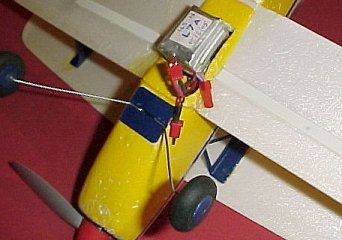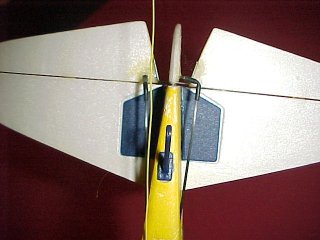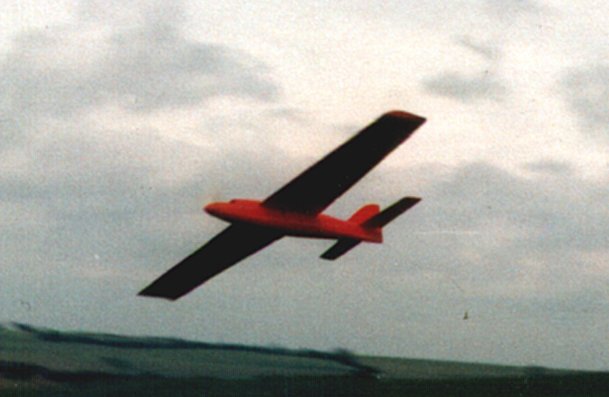

This model came about in the early 80's when Sid King of Cotswold Kits decided to offer his well-known 'Tracer' Club 20 model with a stretched wing (48" span) for use in a european electric pylon racing class. I was sent one to review for 'RCM&E' and as a hack for my impending electric flight book. The original model used a variety of flight packs with little success until the advent of a ready wired flight pack offered by Weston UK with a 540 size motor and 8 'Sub-C' cells. Charging was done by connecting directly across a 12 volt car battery for 20 minutes!
The original model was written off in a frequency mix-up. While I was building a replacement, Sid offered a ready built example which was used for many years. The replacement for the original used the same wing on a new fuselage/tail and was initially powered by a Keller motor on loan from Weston. This needed 12 cells to really perform. It sat around for some years after the motor was returned and eventually received a 600 size motor available cheaply from Proops Educational. With 8 x 1700 mAh cells and a 7 x 6 prop this weighed some 3.5 pounds. It actually flew very well but it was difficult to throw it hard enough to get away unless it was a windy day. It lasted until quite recently.
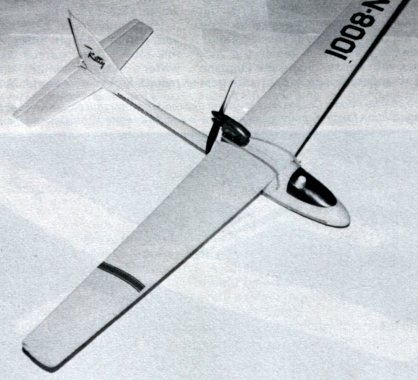
This was a powered glider with a pusher prop mounted behind the wing. The construction was entirely of moulded expanded polystyrene. Power was a '280' size motor, driving a 7" prop through reduction gearing. The battery was slung under the fuselage in a moulded cradle. I used a variarty of battery packs, all of 5 cells to fit the cradle. Performance was quite modest until, almost by accident, I acquired a pair of the correct battery packs. These were 450 mAh and gave good flights of around 9 minutes.
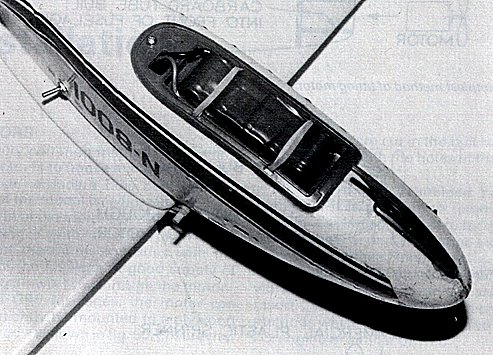
This was a combination that depended very much on all the components being just right and replacements were difficult to find. When I broke the prop it seemed that It was the end of good flights but again, almost by accident, I found that the prop produced for the Modela CO2 motor worked very well.
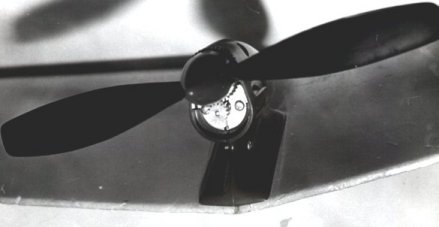
The model gained a new lease of life when I tried a pack of 5 x 700 mAh 'AA' batteries maounted inside the fuselage with a switcher so that I could turn the motor on and off. The glide was never good, due to the construction but, at 50" span and well under 20 ounces it flew slowly and gave relaxed flying. The model was eventually scrapped simply because it became so tatty.
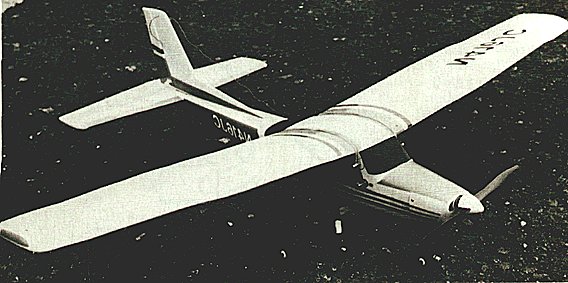
| This was another moulded foam ARTF model produced in the mid 1980's. It was 42" span and designed to use the basic Acoms 2 channel radio complete with large servos and battery box containing 4 x 'AA' size dry batteries. With a 6 cell 600 mAh battery it was quite heavy yet flew quite well with flight times of up to 6 minutes.
The motor was a cheap '400' size with geared 9" prop. The prop was very fragile and became the limiting factor when they became unobtainable. I discovered that a 9" prop designed for rubber powered models could be used, though it was even more fragile. I rigged up a linkage to allow the motor to be switched on and off from the elevator servo. After lying dormant for some years, I resurrected the model to try a home-built speed controller with an 8 cell 700 mAh battery pack. With the elimination of the separate radio battery, the model was now lighter and with more power, giving good performance. I then discovered that a 'Speed 400' motor would fit and gained even better performance. Like the 'Kitty' it became just too tatty to keep. |  |
I used a mini servo driving the original size rudder via the original wire torque rod. With a GWS 'EDP 50' unit, plus 2 amp ESC, a 'Pico' receiver and 2S 1P 340 mAh li-poly, it weighed 4.25 ounces. Performance is 'spritely'. It is great fun trying to fly with just rudder and throttle but, inevitably, it eventually gets away from you. At around half of the design weight it is virtually indestructable. However, those props break very easily. It really needs an elevator, but that would make it too easy.
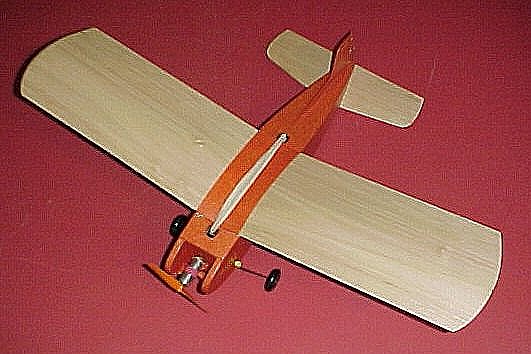
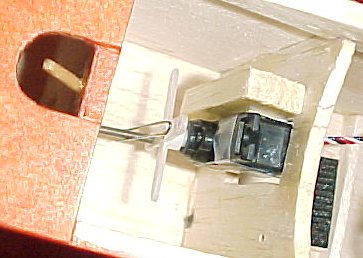
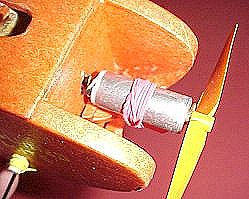
The motor is simply bound to a motor stick with rubber bands, the stick being inserted in a hole in the front bulkhead. The model is very sensitive to thrustline offset and this makes it easy to adjust.
I already had a 'DC1717' motor with integral 11.8:1 gearbox looking for a job and it seemed that this would drive the standard 6" rubber prop supplied with the model. This was even simpler thaa I imagined, simply open up the hole in the prop and push it on! A GWS 'Pico' receiver and two Diamond 3.3 gram servos completed things. Rudder and elevator were cut free and hinged with small pieces of mylar. Linkages are carbon rod and heatshrink tube. All up weight is 95 gram (3-3/8 ounces).
Initially, I powered the model with a 2 cell pack of Kokam 145 mAh li-poly cells but power was marginal, so I went to 3 cells. This worked very well and the model has adequate power. The battery is hung under the model and looks remarkably like the radiator hung under some 1930's biplanes. I keep reminding myself that the motor is rated at 3 volts!
That large high pitch prop produces some interesting effects. The model is reluctant to turn right and sharp changes of direction lead to what racing drivers call a 'tank-slapper'. The lower wing is rigged at rather more incidence than the top one and the result is a tendency to tip stall. It screws out of loops and rolls are virtually impossible because there isn't enough elevator to overcome the camber in both wings. Great fun!
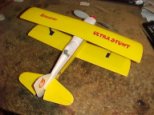
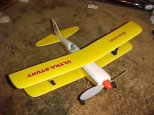
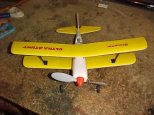

Click on the picture for a larger image.
